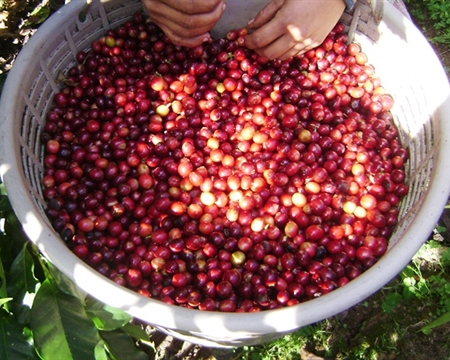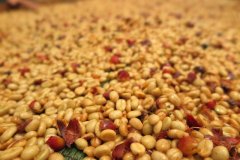History of planting and treatment of Wamuguma in Thika Wamgumar treatment Plant, Sika District, Kenya

For professional baristas, please follow the coffee workshop (Wechat official account cafe_style)
Introduction to the History of planting and processing of Coffee in Kenya
The history of coffee planting in Kenya can be traced back to the end of the 19th century. Coffee trees were introduced from neighboring Ethiopia in the north. Through improvement of their own varieties, there are four common varieties: Bourbon, Kents,SL34, SL28, Typica Luli 11 (Riuri 11).
The vast majority of Kenyan coffee is grown organically without certification because of the use of improved planting techniques and the rare use of chemical pesticides or herbicides. Kenyan premium coffee (AA Plus, AA, AB, PB) are all washed, while the low-grade products of sun-dried beans (non-washing buni) are only available for local use. It's an uncertified organic plant.
Chemical pesticides or herbicides are rarely used because of improved planting techniques. Kenyan premium coffee (AA Plus, AA, AB, PB) are all washed, while the low-grade products of sun-dried beans (non-washing buni) are only available for local use.
Baking
Shallow baking
Flavor
Honey, flowers, rich aromas, fruit fudge,
Black plum juice, fresh-cut Chinese fir and pomelo and blackcurrant
The country
Kenya
Producing area
Sika District (Thika)
Cooperative society
Risel Cooperative (Ritho)
Altitude
1800 meters above sea level
Grade
AA
Typical Kenyan coffee flavor features:
High acidity
Clean and clear lines
The most solid and rich taste is like the weight of an African elephant!
Full of fruit tonality and floral aroma
Green plum, Hawthorn, black plum, temperate fruit (BlackBerry, cherry). Wait
Violets, roses.
The rhyme is long.
Black sugar, smoked candied fruit, cork, flower fragrance.
Important Notice :
前街咖啡 FrontStreet Coffee has moved to new addredd:
FrontStreet Coffee Address: 315,Donghua East Road,GuangZhou
Tel:020 38364473
- Prev

Water washing Red Cherry Project-Yega Ficher Kochere Biloya Cooperative Biloya Coop
Exchange of professional baristas Please follow the Coffee Workshop (Wechat official account cafe_style) Red Cherry Project 2007, Trabocca Dutch traders launched the Red Cherry Project, whether in washing, half-washing, sun, half-sun and other treatments, in order to encourage coffee farmers to produce the best quality coffee, farmers who strive to produce high-quality coffee beans can get essentially
- Next

Introduction of the 2016 Costa Rican COE champion Shumawa Manor Finca Sumava de Lourdes
For the exchange of professional baristas, please follow the coffee workshop (Wechat official account cafe_style). One of the two estates of Sumava de Lourdes, Monte Llano Bonito Manor, won the 2016 CoE Cup. The 13th place in the 2015 Costa Rica extraordinary Cup (CoE) (Finca Monte Llano Bonito) has two estates Monte Llano.
Related
- Detailed explanation of Jadeite planting Land in Panamanian Jadeite Manor introduction to the grading system of Jadeite competitive bidding, Red bid, Green bid and Rose Summer
- Story of Coffee planting in Brenka region of Costa Rica Stonehenge Manor anaerobic heavy honey treatment of flavor mouth
- What's on the barrel of Blue Mountain Coffee beans?
- Can American coffee also pull flowers? How to use hot American style to pull out a good-looking pattern?
- Can you make a cold extract with coffee beans? What is the right proportion for cold-extracted coffee formula?
- Indonesian PWN Gold Mandrine Coffee Origin Features Flavor How to Chong? Mandolin coffee is American.
- A brief introduction to the flavor characteristics of Brazilian yellow bourbon coffee beans
- What is the effect of different water quality on the flavor of cold-extracted coffee? What kind of water is best for brewing coffee?
- Why do you think of Rose Summer whenever you mention Panamanian coffee?
- Introduction to the characteristics of authentic blue mountain coffee bean producing areas? What is the CIB Coffee Authority in Jamaica?

